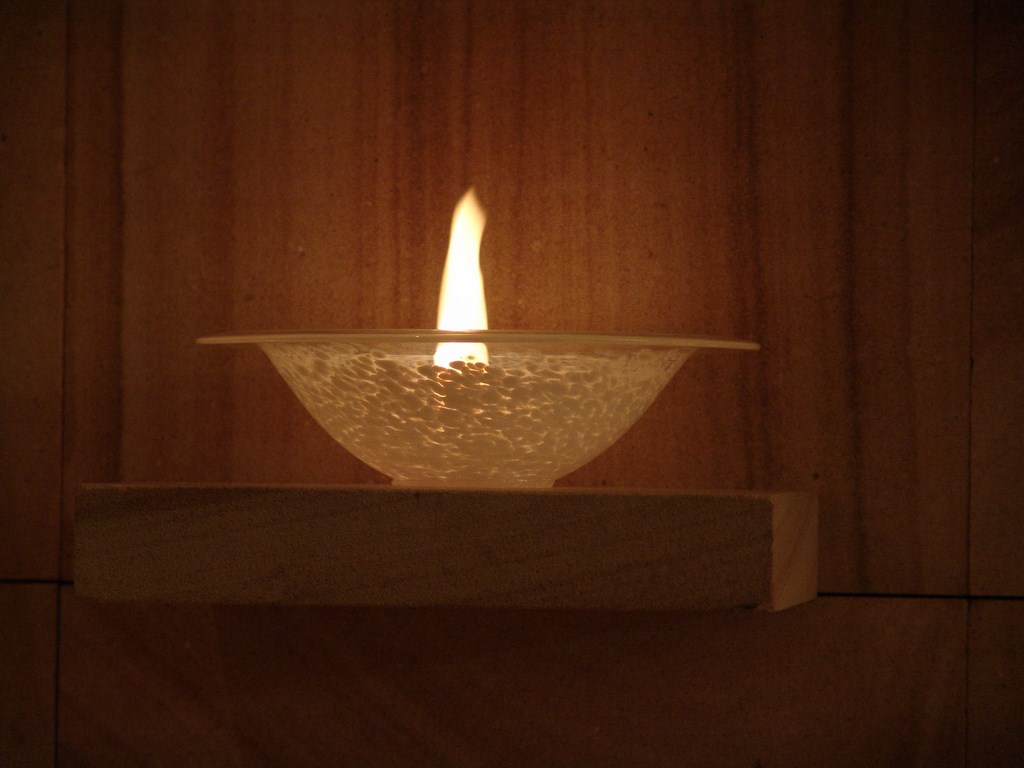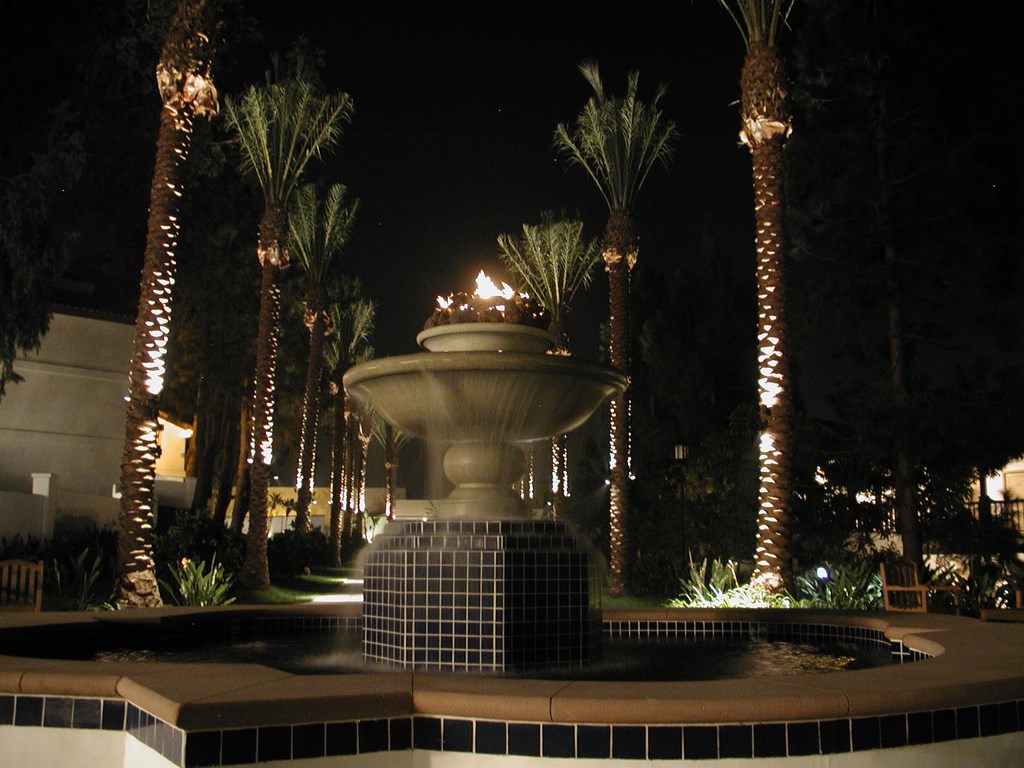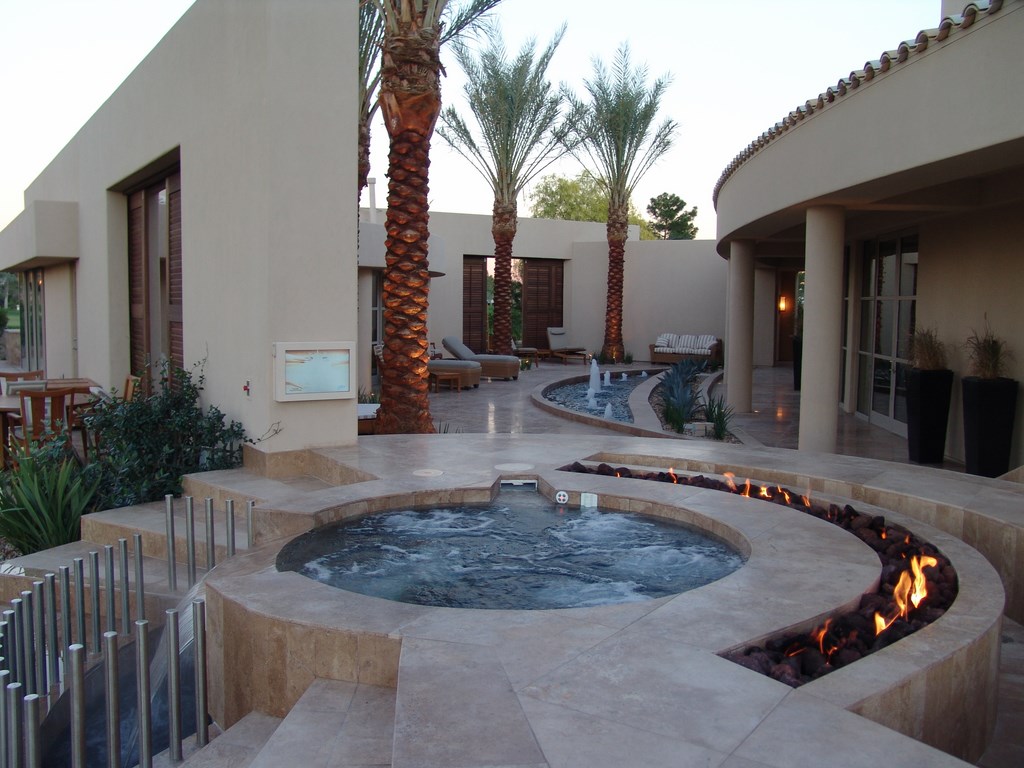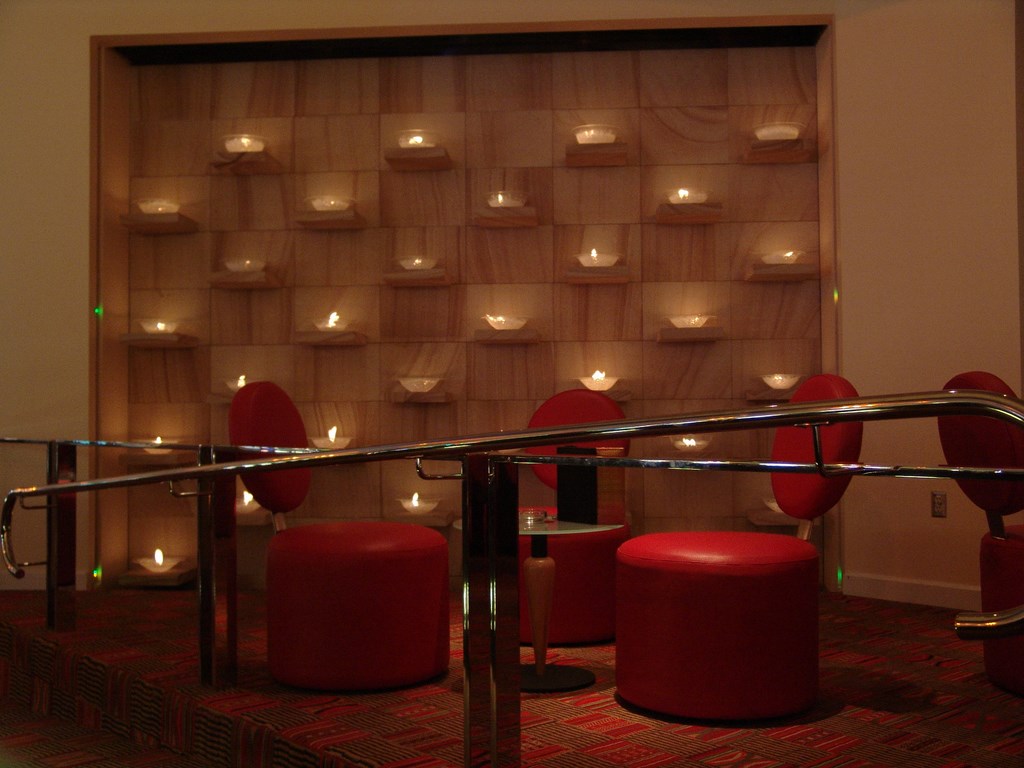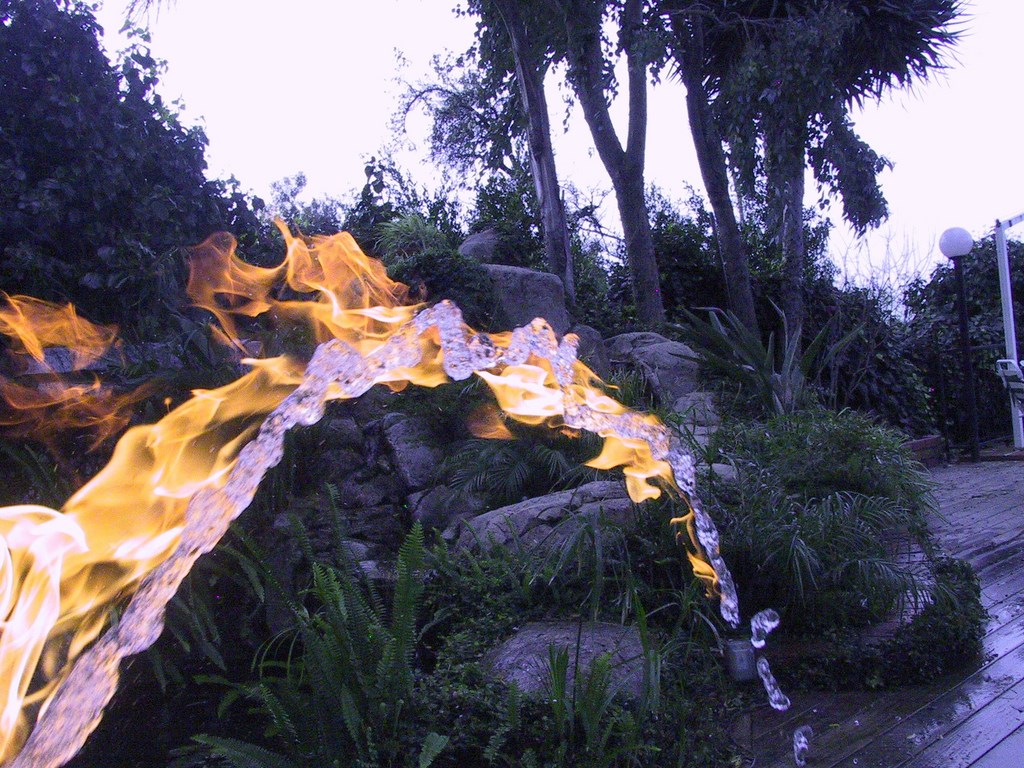Flames On

As part of my work on movies and television shows through the past dozen years, I’ve developed a range of special effects that focus specifically on fire. For the science fiction hit Men In Black, for example, I was charged with devising the flame-spewing weapons wielded by Tommy Lee Jones and Will Smith in a spectacular scene in which they shoot down a flying saucer.
That system involved a range of safety issues along with devising a specially formulated fuel (alcohol mixed with various metals) to create blue flames as well as a combination of inert gases and electronic control systems that were used to extinguish the fire and protect the actors. As is the way with so much in Hollywood, an on-screen sequence that lasts just a couple of seconds took my team months to design and build.
Of all the myriad effects I’ve built through the years, those that use fire are the most dramatic, complex and interesting. They’re also the most tested and safest, because in the world of movies and live actors, there is zero tolerance for error when it comes to the use of these effects.
Starting about four years ago, I began turning my attention away from the entertainment industry and gradually came to focus on working with fire in landscapes and as a sculptural/artistic medium. Much as watershapers wield and control water to create experiences for their clients, I’ve endeavored to do the same in working with fire. I still work occasionally on film or television projects, but the use of fire in places where people are directly and more casually exposed to it is my passion these days.
ELEMENTAL SCIENCE
Through the years, I’ve come to develop a profound appreciation and respect for fire, for the technology used to contain and control it and for its ability to create powerful aesthetic experiences for those who safely come near or view it. Whether in a room or a landscape or on a television or movie screen, it simply overpowers any other visual element in its environment.
One of the challenging things about fire effects in the movies is that audiences have become desensitized to the presence of fire in the form of explosions, weapons, disasters and other infernos, which leaves effects specialists with the constant challenge of developing more and more outrageous effects.
In the real world of landscapes and/or interior spaces, however, fire is dramatic and compelling no matter how small or large a form it may take. Everything from candles and torches to fireplaces or fire rings become immediate focal points and transform the ambience as well as the way we view everything that’s bathed in the light of their flames. Where fire in the movies is all about spectacle, in real-world environments it tends to be subtler. Nonetheless, I’d argue that it retains every bit of its awesome, elemental power.
That sense of potency probably has a lot to do with the fact that controlling fire is one of the hallmarks of humanity, right up there with our capacity to control water, domesticate animals and use language. Fire warms us, cooks our food, makes many forms of transportation and industry possible and, for thousands of years (until television displaced it), was the centerpiece of our homes.
| From modest firepits and torches to grand applications of a monumental sort, fire is fast becoming a more common design feature for outdoor spaces both public and private. And no matter the scale, these fire features immediately become a dynamic focal point. (Photos courtesy Automated Fire & Water Effects, Las Vegas, Nev.) |
While it is profoundly productive, fire obviously is also amazingly destructive. It’s a key component in religious ceremonies and private and public celebrations, but it’s also associated with war and the ravaging of forests and grasslands. It warms, but it burns as well.
These productive/destructive dualities are why, from an aesthetic/design standpoint, fire evokes such profound emotions in those who view it and come near it. When it’s surrounded by darkened spaces and lower light saturation, the eye literally blocks out the rest of the scene and perceives only flame. When it is under control, there is something inherently exciting about sitting near a fire – an ancient emblem of humankind’s mastery of nature.
We are drawn to the natural, wild beauty of fire, but we’re also keenly aware of the artificial structures and systems that make it safe to approach – structures and systems that enable us to view it without fear and get close enough to enjoy the warmth. I’ve seen spaces where a designer has frustrated that instinctive attraction, the result often being that, as with waterfeatures, observers will take it upon themselves to defeat barriers and will traipse across planted areas or other obstacles to come closer.
The upshot of this human compulsion to be around fire is that landscape and watershape designers must be fully aware of the power that fire encompasses while putting it into safe and appropriate environments. Above all else, fire must be used with great and deliberate care.
INCENDIARY PERSPECTIVES
In my work, I am endlessly intrigued by uses of fire with water – a particularly powerful linkage given the fact that water can destroy fire. (The same sort of contradiction works in the opposite way with fire and stone or metal in that fire can’t destroy either one, but I find fire and water to be the most compelling of all possible combinations.)
In the vast majority of situations, fire and water work together by virtue of proximity: A fire pit or fireplace by a pool, pond or fountain, for instance, creates an exciting dance of light on the water’s surface, with the reflective value of water working hand in hand with fire to create extraordinarily dramatic effects.
Falling sheets, rivulets or streams of water that reflect and distort the light of a fire all create constantly changing displays that will always draw the eye, but a reflected view of fire across a quiet pond or swimming pool can be equally evocative and often serves as the most mesmerizing element in a given landscape.
| Applications that feature fire and water together are always among my favorites, perhaps because water has the potential to destroy fire. Whether the surface is turbulent or still, watching flames dance on the water is mesmerizing in any setting. (Photos courtesy Automated Fire & Water Effects) |
In some cases, we see systems that seemingly bring fire and water into direct contact – flames rising from a quiescent plane of water, or perhaps rising out of the top of a waterfall to create a volcano effect. All of these systems require a great deal of control of both elements during design and installation if they are to function as intended for a long, serviceable haul.
As is true with water effects, the type of impression you want to make must be fully considered and accommodated from the design phase forward. In some respects, it’s also similar to landscape or watershape lighting in that fire is best not left as an afterthought.
This means that the designer needs to understand and encompass a matrix of possibilities. A small, subtle candle effect with flame heights of an inch or two, for example, can be just the look you want. But then you have to decide whether to achieve it with candles, oil-fueled torches or permanently installed feed systems that produce small flames with natural gas.
For larger effects – a medium-sized fire, say, with 12-to-15-inch flames – you have to decide whether the flame is 15 inches tall with a narrow source or 15 inches wide with a more diffuse source. If you opt for the latter, you’ll be working with a basic omni-directional flame source of the sort commonly found in outdoor fire pits – an easy choice. But then you need to decide whether to contain it in a conventional way or to go for the unexpected and house it within a pottery vessel or metal sculpture and whether to place it near the pool or off in a planter – or even on a separate deck or overhanging balcony.
| This sequence of photographs of a fire effect on a waterfall demonstrates why people are so fascinated by fire: As the flames dance, they change constantly. No matter how long a time you spend watching them, they never fall into a pattern or become predictable and boring. |
Then there are extreme effects with flames in the 18-to-36-inch range: These are usually produced with large burners designed to produce dynamic “fireball” effects, and while they are less commonly used in residential settings because their radiant heat can scorch things several feet away, they can be very dramatic if proper observer distances are maintained and the surrounding structures, pathways and seating areas are designed to ensure a heightened level of safety.
In different applications, fire can be used to mark boundaries and pathways, as with tiki torches. These versatile oil-fueled devices can also serve a dual purpose as insect repellents when additives are placed in the oil. In visual terms, however, they can be used to create fascinating effects as they flicker atop walls or behind plantings, trellises, glass panels, sculptures or metal screens. They can be used to frame distant views, highlight the corners or contours of a body of water, define an entrance to a space or give shape to an architectural or sculptural feature.
SHAPING FLAMES
The ranges of possible effects and the systems used to generate them are both extraordinarily broad. For a great many applications, manufacturers of fire systems provide reliable, off-the-shelf systems that come complete with burners, fuel-source lines, manifolds, ignition systems, electronic controls, gauges and shut-off valves. In a vast majority of situations, making use of these pre-engineered systems and following manufacturer directions and local codes to the letter will do the trick.
For these purposes, companies such as Automated Fire & Water Effects (Las Vegas), Grand Effects (Mission Viejo, Calif.) and others provide standard systems for fire pits, cauldrons, torches and more. They can also work with you to develop fully automated systems that achieve a wide range of custom effects.
As is true with water, flame can be shaped in a number of ways. It can be directed into distinct, aggressive vertical shapes with high-pressure fuel systems, or it can display billowy, soft textures at low pressures. It can vary in color from very red and orange (with low-oxygen mixtures) to very blue or even invisible with high-oxygen mixtures. (The more oxygen, the hotter the flame – and the less carbon will build up on surrounding surfaces.) A hot flame can even be used to heat an iron or steel sculpture to make it glow red/orange – a stunning visual effect.
|
Gas Pressure As mentioned in the accompanying text, natural gas is preferred over propane as a choice for fueling decorative fire effects. Beyond the fact that natural gas is lighter than air and therefore not given to accumulating in low spaces (as is propane), it is also supplied at a constant pressure. Homes on the outskirts of areas with developed utility infrastructures often rely on propane for cooking and heating and feature large propane-storage tanks that must periodically be refilled. As the propane supply in these tanks diminishes, the tanks lose pressure. (This is because the liquid propane evaporates to a gas, a process that makes the liquid very cold and effectively lowers the tank’s internal pressure.) For temporary fire displays, I have seen hotwater “bath” systems used to battle this pressure-lowering effect. With permanent propane-based installations, there are also vaporizers that use flames to boil the propane and turn it from a liquid into a gas. (The famous volcano system at the Mirage Hotel in Las Vegas uses this type of system, as do various displays at amusement and theme parks.) These sophisticated systems are quite costly, which is a key reason they are seldom seen in residential fire effects. One of the reasons designers reach for propane in such high-profile settings is that it produces a much richer orange flame than does natural gas. For the vast majority of residential applications, however, natural gas is clearly the sensible option: It’s supplied directly to the site at a constant pressure, you don’t ever have to refill a tank and, being lighter than air, it dissipates more quickly when released into the open air. Another advantage of natural gas is that it stinks. While both propane and natural gas are inherently colorless and odorless, utilities add a rotten-egg smell to natural gas courtesy of ethyl mercaptan. This makes gas leaks easy to detect. — K.N. |
What I’ve seen in recent years is the emergence of a growing number of sculptors who use fire in their compositions. They’ll make burner systems into details that are of equal aesthetic importance to the flame itself instead of treating them as utilitarian devices intended to do no more than emit flame. In some pieces, fire is used to react with metals including certain alloys of copper, aluminum, steel or titanium to produce different colors: A flame against a hot sheet of copper, for example, will give off a green tinge, while against steel it will generate a vivid orange/yellow color.
Flames can also be designed to emerge through perforated copper or stainless steel tubing bent into various shapes, a technique often used to create walls of flame that are thin in depth from front to back, but potentially extremely wide and tall – or contoured in some specific way. In smaller applications, this technique can be used to create figures within fireplaces or fire rings that can represent a drawing or pattern of some kind, such as a company logo.
Flame can be channeled and manipulated to take on a directed (even literal) shape, such as a fish tail or a single, thin, upward-pointing stream. It can also be shot under high pressure to create fireballs or made to swirl like a tornado. In systems I’m currently developing, flame is mixed with water in pressurized nozzles to create arching, fully integrated fire/water mixes.
I’ve seen flames sprayed against upward-facing surfaces or licking along banked structures. I’ve also seen it choreographed and sequenced by electronic control systems in animations reminiscent of dancing fountains. In subtler (but incredibly sophisticated) applications, I’ve seen materials used to create the effects of low-burning embers that gently dance to illuminate surrounding spaces and materials.
It is indeed a field where the skies – and our imaginations – are truly the limit.
SAFETY STANDARDS
Regardless of technical sophistication, all fire applications have some very basic issues in common, many of them centered on safety. Those issues can be broken into two distinct categories: First, you don’t want anyone to be hurt by coming in overly close contact with your fire effect and, second, you don’t want your controlled flame to start another uncontrolled fire.
This means, basically, that you must control the movement of people and the behavior of the fire itself. Many of these aspects are dictated by local building codes or the NFPA 160 guidelines (“Flame Effects Before an Audience”).
| Modern technology and imaginative artists are taking flame effects to all new levels of visual appeal, using fire as a sculptural material in the same way watershapers have elevated the special effects they achieve with water. Recently, I’ve taken things a step farther by combining the two materials with startling intimacy, introducing a flammable material to a water stream to create incendiary arches. (Photos at top left, top right and bottom left courtesy Automated Fire & Water Effects) |
On a commonsense basis, you want the space organized so that people must intentionally move across some obvious barrier to come in contact with the flames in order to get burned. Also, you have to consider the proximity of fire to materials that might serve as a fuel source. Trees and other plant materials or wooden structures overhanging fire sources are a very bad idea.
Environmental influences on the flame effect should also be taken into account. Rain and the expansion of freezing water, for example, can damage crucial components, while falling leaves can accumulate in an inactive flame effect and lead to an unwanted fire once the flames are turned back on.
In addition, structures that contain fire must be able to do so safely. That may seem obvious, but there are some types of stone materials – perhaps most notably river rock – that can explode into shards when exposed to fire. Glass that’s used with fire must be specifically designed to accept extreme temperatures (as does Pyrex) for much the same reason.
Wind is a big safety issue with fire as well. This has to do with the fact that a prolonged gust can blow out a flame, in which case the fuel can continue to emerge and become concentrated enough in an area around the burners to become a perfectly flammable blend of fuel and oxygen. If a spark of some type is inadvertently supplied to that fuel, it can create a fireball or column of flame that will burn those nearby or start an uncontrolled fire.
|
A Clear Distinction The word pyrotechnics is often misunderstood. Most people consider it to mean any technological system or study that relates to fire, while others believe it has to do solely with fireworks. Both definitions are wrong. Pyrotechnics actually refers to fuel compounds that chemically contain their own sources of oxygen, usually in the form of perchlorates. Fireworks, gunpowder, and the solid rockets used to propel payloads into outer space, for example, are all pyrotechnics as they will burn without the presence of additionally supplied oxygen. In other words, a gun or a bottle-rocket or a space-shuttle launching system are all capable of combusting in the vacuum of space or even under water. By contrast, a system that uses natural gas, propane or gasoline is not a pyrotechnic as it cannot create fire without the presence of oxygen from a separate source – typically (but not always) the Earth’s own atmosphere. This is the reason for carburetors on vehicles or a Venturi on a barbecue: They enable the fuel to mix correctly with the right amount of oxygen. — K.N. |
Almost all control systems for flame effects include flame sensors that will determine when the flame has extinguished and will then automatically close valves to stop gas emission. More sophisticated systems include anemometers or other sensors that automatically lower or completely shut off flames when the wind velocity or other predetermined safety issues arise – such as a person standing too close to the flames.
This brings up a key consideration regarding the fuel used in these systems: The vast majority of decorative flames use propane or natural gas, the latter being by far more common. Natural gas is the slightly safer of the two because it is lighter than air and will dissipate with relative ease.
By contrast, propane is heavier than air and will sink to the lowest level when released from its source. If a propane burner is blown out by wind or some other leak occurs, unintended ignition of the gas can be catastrophic – as in cases where the gas fills up a nearby basement or equipment vault and explodes violently when hit by a spark of any kind. (See the sidebar “Gass Pressure,” above, for more on propane concerns.)
On more familiar ground, the output of any fire system is measured in Btus (British Thermal Units), just as with heaters, furnaces or ovens. Proper line sizing relative to the Btu output is absolutely critical for effective and safe operation, with the distance between the “appliance” and the gas meter being a crucial factor, just as with pool heaters.
The creation of fire also generates gas by-products that must be taken into account, including carbon monoxide and carbon dioxide, both of which can mass into deadly concentrations near a flame effect. The combustion process itself can also deplete the area next to the flame effect of much of its oxygen, which makes it important to ensure adequate ventilation.
In this and a range of other matters, component or system manufacturer recommendations should always be followed without exception.
IT’S ALIVE
When I consider fire as an artistic medium as well as a technical challenge, I find it quite useful to think of it as a living thing.
That may seem absurd, but think about it: Fire is “born” when oxygen, fuel and spark come together. It consumes “food” in the form of flammable fuels and will “grow” the more fuel and oxygen are added. It can “reproduce” by starting other fires and will “die” when robbed of fuel and/or oxygen. In a design sense, fire must be carefully conceived, fed, nurtured and tamed, as is the case with many species of animals and plants we use to our benefit.
When used properly in a landscape, watershape or interior setting, there are few things that will provide more interest, intrigue, mystery, romance or excitement than fire. For those who wield it creatively and sensibly, fire effects may indeed be the ultimate “turn on.”
Karl Nettmann, a 12-year veteran of the film industry, a licensed pyrotechnician and a manufacturer of high explosives, is an artist and sculptor who has worked on such films as Scream 2, Men in Black, The Truman Show and, most recently, Underworld 2: Evolution. His focus has recently shifted to fire-oriented metal artwork for landscape and interior settings, an interest that began as a hobby and has since expanded into a business. Using his expertise in special effects, Nettmann incorporates the elements of fire and water into his designs, manipulating them into balanced and beautiful compositions. His works are now on display in homes and businesses around the country and at www.waterfirelight.com.










